
All categories
Featured selections
Trade Assurance
Buyer Central
Help Center
Get the app
Become a supplier

(40 products available)
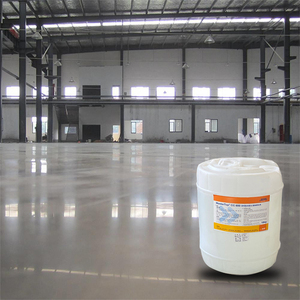
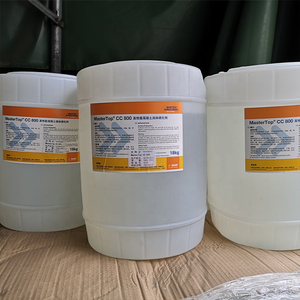
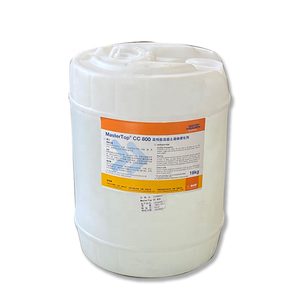
































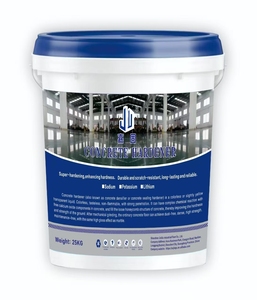
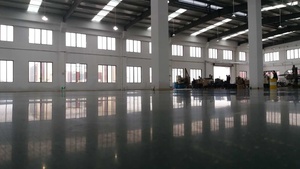





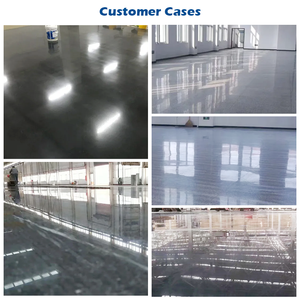








Sodium silicate concrete sealer functionally differs, influencing how they interact with distinct concrete surfaces. Below is a breakdown according to the diverse concrete sealing needs:
Acrylic sodium silicate sealers
Acrylic sodium silicate sealers combine acrylic resins with sodium silicate. Hence, they come to penetrate deep into concrete surfaces, creating both a chemical reaction with the concrete and a protective coating. This blend offers enhanced durability, fading retardation, and UV resistance. In addition, this type of sealer is applicable in driveways, patios, and industrial floors where waterproofing and surface protection are critical. Generally, the acrylic overlay facilitates the formation of a protective layer over stamped concrete that beautifies aesthetics and promotes improved wear resistance.
Water-based sodium silicate sealers
Conventionally, water-based sodium silicate sealers are more straightforward to use and are less harmful because they have water as a solvent. This feature makes them suitable for indoor applications where strong smells and fumes should be avoided. In addition, they are easy to clean, a positive factor when applied. The water-based sealers are also designed to improve surface hardness and offer good protection against water intrusion while being eco-friendly.
Solvent-based sodium silicate sealers
Solvent-based sodium silicate sealers usually offer superior penetration and are more resilient, emphasizing outdoor areas. Due to their concentration, they are especially promising in improving surface strength and resisting chemical attacks. Due to this property, they are best suited for exposed concrete surfaces like driveways, walkways, and industrial pavements requiring protection against weathering and heavy traffic.
Sodium silicate and epoxy hybrid sealers
These hybrid sealers provide the strength of epoxy and the strengthening properties of sodium silicate. This combination works best for high-performance flooring. They bond powerfully to the concrete surface and resist abrasion, chemicals, and moisture. This is why these hybrid sealers fit best in industrial settings, warehouses, and garages where the flooring endures heavy loads and adverse environmental conditions.
A sodium silicate concrete sealer has a diversified concrete application due to its distinct properties. Below is its application in cement surfaces:
Increasing surface durability
A sodium silicate concrete sealer increases concrete durability by protecting it from water chemicals, oils, and other contaminants. For this reason, it is mainly used on floors in warehouses, factories, and garages that undergo heavy traffic.
Protecting against water intrusion
Concrete surfaces are highly affected by water infiltration, which causes damage like cracking. The sodium silicate sealer efficiently protects concrete driveways, patios, and walkways from water penetration.
Improving concrete strength
The best quality of sodium silicate sealers is their ability to react with free lime in concrete, forming calcium silicate hydrate. This process boosts the concrete's compressive strength, making it ideal for heavy-warehouse pavements.
Enhancing chemical resistance
In concrete, chemical attacks, including those from acidic substances, lead to degradation. Sodium silicate sealers create a protective barrier against these attacks on outdoor patios and industrial floors.
Resisting UV and weather damage
A sodium silicate for concrete sealer has impressive UV resistance properties. It, therefore, protects outdoor concrete from sun damage and extreme weather. An example of this application is pool decks that undergo gradual wear from sunlight and water exposure.
Providing dustproofing
Concrete is a highly porous surface, and its porosity causes dust accumulation in indoor spaces. However, applying a sodium silicate sealer fills these pores and minimizes dusting. This makes it suitable for manufacturing plants, warehouses, and storage units where dust pollution must be avoided.
Reducing maintenance requirements
Sodium silicate sealers form a protective layer over concrete. This layer helps minimize the need for frequent maintenance and the need to apply concrete curing compounds. For this reason, it benefits commercial facilities and outdoor spaces that should remain low-maintenance.
A sodium silicate sealer has a retrospective improvement of concrete over the years. This happens due to the densification and increased strength through the formation of chemical bonds between the silica and the calcium hydrate within the concrete matrix. Below is an insight into some benefits:
Enhanced strength and longevity
As stated earlier, sodium silicate sealers improve bonding and synergy between cement particles within the concrete. This process enhances better strength. It also occupies micro-cracks, hence diminishing internal weakness. This results in significantly stronger concrete that is less prone to cracking or spalling. Additionally, this longer durability reduces the frequent need for repairs and significantly extends the lifespan of concrete surfaces.
Improved resistance to environmental conditions
A sodium silicate concrete sealer protects concrete from penetrating oils, water, and chemicals. These include industrial and household chemicals that may damage concrete. The sealer also enhances resistance to weather elements like freeze-thaw cycles and UV radiation, which cause gradual degradation of concrete surfaces over time. Thus, this makes it especially applicable for outdoor patios, driveways, or walkways.
Dust reduction and ease of maintenance
Concrete floors are associated with dust accumulation, but this sealer reduces it by closing pores within concrete. This minimalizes dust particles from settling in the air within an environment. Additionally, the sealer reduces water and chemical absorption, making it easier to clean and maintain concrete surfaces without frequent intensive cleaning.
Enhanced aesthetic appearance
A sodium silicate concrete sealer dries clear, improving concrete color and making it more vibrant. It also provides a slight sheen to the surface that redefines its appearance. Hence, this makes it attractive for homeowners and business environments where presentation matters. Nonetheless, the sealer doesn’t make the surface slippery, which is an added advantage.
Cost-effective solution
Using a sodium silicate concrete sealer is a viable solution. It efficiently reduces the frequent need for patching or replacing concrete. Therefore, its long-term benefit outweighs its initial cost, making it practical for both residential and commercial users.
Concrete sodium silicate sealers come in varying types formulated to address specific needs orientated with distinct concrete applications. Below is guidance on choosing the right sodium silicate concrete sealer for the given application:
Assess concrete conditions
One should assess the existing condition of the concrete surface. These include cracks, spalling, or surface wear. While minor cracks may not require repair, deep-seated cracks compel sealing or filling before any application of the sealer. An existing porous surface may benefit more from a penetrating sealer.
Determine the environment of the concrete
Concrete sodium silicate sealers come in formulations specifically suited to indoor or outdoor applications. One should consider factors like exposure to harsh chemicals, UV light, or weather conditions when choosing the type of sealer, water-based for low-chemical exposure interior surfaces, and solvent-based for outdoor or industrial applications.
Choose the right formulation
On the market, sodium silicate concrete sealers include solitary sodium silicate sealers and those containing silicate-epoxy hybrids. Though the former is applied to densify and strengthen concrete, the latter is created to offer high-performance protection in industrial settings.
Decide on a finish
Sealers typically come with a matte, satin, or glossy finish. A glossy finish normally enhances color and provides more surface protection. A satin or matte finish, in contrast, avoids glare and offers a more natural look. One should choose a finish depending on the aesthetic preferences and functional requirements of a given space.
Assess compatibility with other products
Sometimes, a sealer may need to be reapplied or a new sealer layered on the prior one. This means that when selecting a new sealer, one should ensure that it is compatible with past treatments. Such treatments involve previous sealers or surface hardeners so that there is effective bonding and no adverse reaction occurrence.
A1: A sodium silicate concrete sealer is a pioneering liquid material that protects concrete from damage while enhancing its strength and durability. It is primarily used in industrial areas where concrete must withstand heavy traffic and harmful chemicals. Mainly, it works by penetrating the concrete and bonding with the cement particles to form a robust and impenetrable matrix.
A2: The sealing process must begin with a clean surface; hence, cleaning and preparing the concrete is mandatory. The preparation process may require patching and leveling and several other concrete repairs. The next step is applying the sealer using a pump-up sprayer or a roller. After that, allow some time for it to penetrate and saturate the surface, then follow up by wiping the excess with a clean mop or cloth. Finally, let it cure so that it achieves maximum effectiveness.
A3: The reapplication frequency of sodium silicate sealers depends on specific factors like the sealer type, concrete conditions, and degree of exposure. In most cases, water-based formulas need reapplication annually, while solvent-based variants can last two or more years. Another key factor is the wear level of high-traffic areas, which may need more frequent reapplications.
A4: Yes, this makes it a safer alternative for indoor applications compared to other sealers, which may contain volatile organic compounds.
A5: A sodium silicate concrete sealer enhances durability via a process known as ''silica gel formation." While the sealer fills pores and micro-cracks in the concrete, it reacts with calcium hydroxide to produce calcium silicate hydrate. This new compound strengthens the concrete matrix, lowering its susceptibility to cracking, spalling, and other forms of deterioration.